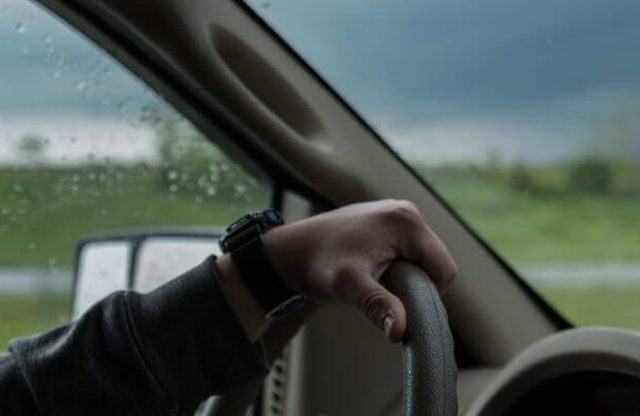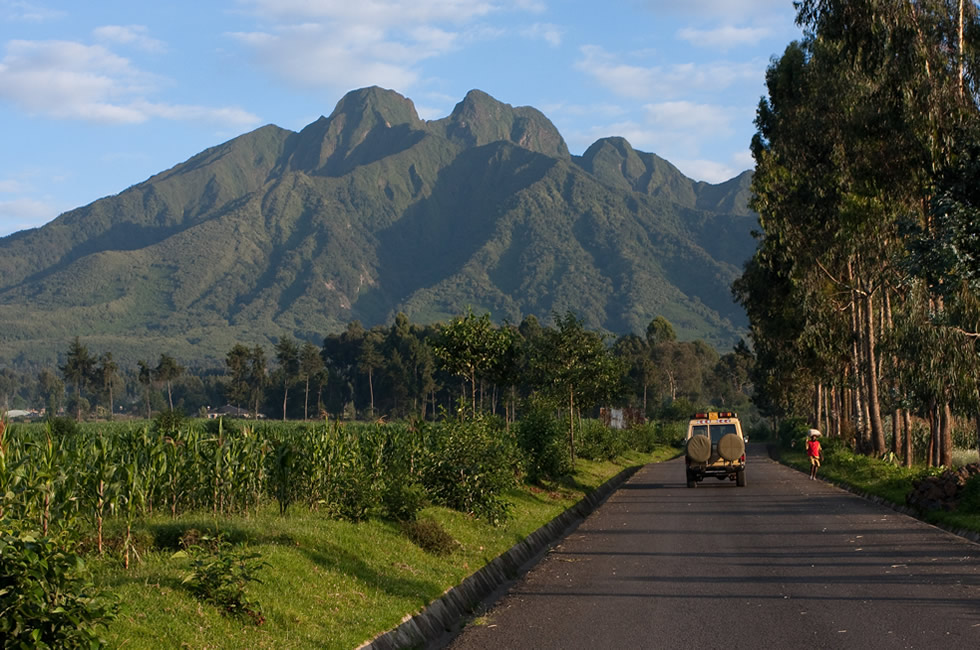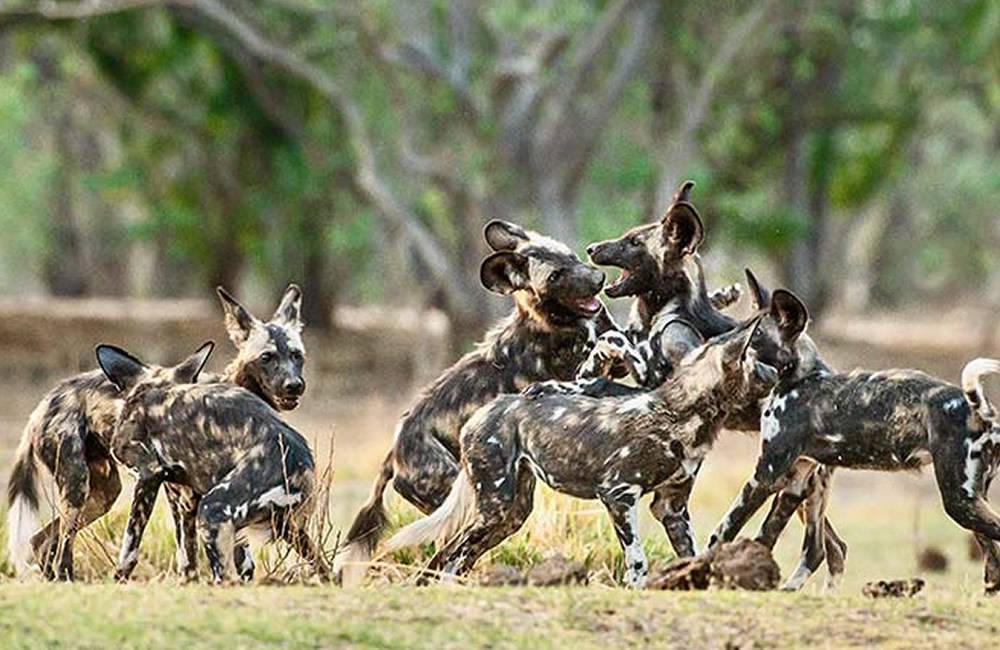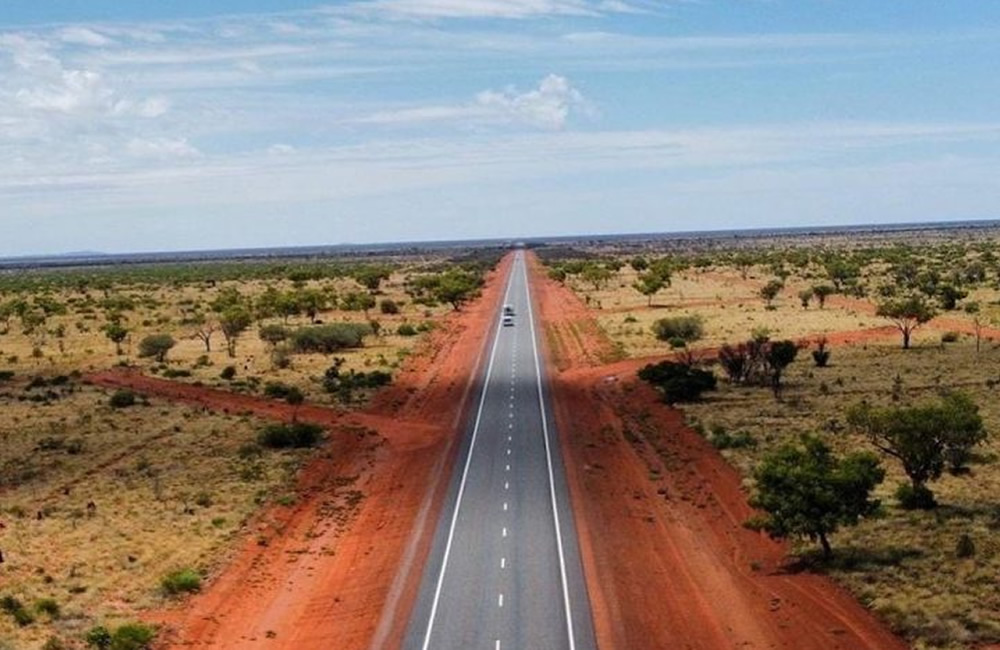The Big Five, historically, consists of the five most dangerous animals to hunt on foot; lion, leopard, elephant, rhino and buffalo. However, these days the safari industry uses the ‘Big Five’ as an advertisement. It has become a tick list synonymous with a successful safari. If you have been to Africa and seen the Big Five, then you must have had a great time, right?
A wild dog preparing to hunt
For me, this is not the case. Don’t get me wrong, I love all animals and am especially excited by the big and dangerous ones but I think we shouldn’t focus on them to the detriment of everything else. As it happens, my most favourite animal is not amongst the Big Five. I love wild dogs. They are playful, intelligent, beautiful and yet ferocious hunters. They have a complex social system and an emotional intelligence not seen in solitary animals. To me, they are simply wonderful.
Beautiful creatures; I simply adore those big round ears!
Sometimes known as painted dogs for the beautiful array of colours splashed across their fur like a piece of art, wild dogs are one of South Africa’s most endangered carnivores with less than 6000 left in the wild. Persecuted in the past by farmers and conservationists alike, they were believed to be vermin and were poisoned or shot on sight. In fact, they were loathed so much due to their particular way of hunting that the government even paid a reward for their tails and carcasses, spending over £369,000 between 1911 and 1934. This horrific practice successfully eliminated wild dogs from 25 of the 39 countries in which they were originally native.
In addition, their genetic closeness to domestic dogs makes them highly vulnerable to catching rabies, a devastating disease that invariably kills the entire pack of up to 30 individuals. With rabies still a very real problem in many parts of Sub-Saharan Africa, this poses a genuine threat to the survival of the species. Lastly, due to these incredible athletes needing huge territories to survive, sometimes as large as 2000km2, they are one of the first species to suffer at the hands of habitat loss. Sadly, it seems that this stunning creature has the odds stacked against its survival in the modern world.
This wild dog had eaten recently – look at the blood around his face.
However, with attitudes shifting and a huge conservation effort now under way, the wild dog is finally making a comeback! It is now illegal to hunt wild dog anywhere in the world and a special permit must be applied for to capture and keep them. The creation of vast protected areas such as the Kruger National Park in South Africa, as well as the felling of fences between neighbouring areas to create even bigger, Transfrontier parks are also vital to their future existence. Nowadays, the Kruger is one of the best places in the world to see wild dogs in their natural habitat.
Wild dog sightings like these are always special
Here at my new lodge in the Klaserie, part of the unfenced Greater Kruger, we are especially lucky to have a pack of roughly 10-15 wild dogs that can often be seen roaming the property in search of their next meal. As my favourite animal, I couldn’t be happier! In the past few weeks since I started working here, I have had some incredible sightings. Unlike lions and leopards, wild dogs are largely diurnal animals and are most active in early morning and late afternoon. Because of their high dependency on each other to hunt and survive, the entire pack bonds on a daily basis through play meaning that even when they aren’t on the move, there is always some fascinating behaviour to observe and enjoy.
Late one evening, I had a once-in-a-lifetime sighting of this particular pack of dogs who had managed to chase a leopard up a tree. Although physically larger, the leopard was vastly outnumbered and clearly very displeased with his current situation. Fortunately for him, wild dogs aren’t able to climb so he merely had to wait it out until the dogs got bored or hungry and moved on. For me, however, watching a pack of wild dogs and a leopard in the same sighting was a pretty incredible experience! I spent all of forty minutes watching them play and interact with each other, the poor leopard becoming ever more uncomfortable as the sun set in the distance. Eventually, though, with the night fast moving in, I was forced to tear myself away.
This leopard was stuck up the tree for some time
Happily for me, the dogs didn’t go far and two days later I found them once more. Enjoying a relaxed moment at the dam, they suddenly decided it was time to hunt. Putting my land cruiser quickly into gear, I followed them up the road as they began to scout for prey. Chugging along slowly behind them as they zig-zagged and sniffed around to detect a fresh scent, I almost felt part of the pack. Just then, all of a sudden, they spotted something and were off across the thicket. I just about managed to stay with them as they singled out a lone impala ram as their target.
Not being stealth hunters, wild dogs prefer to run their prey to the point of exhaustion, at which stage they move in for a fast but grisly kill by disembowelment. Seeing them coming, the impala ram alarmed and fled the scene as fast as it could. A frantic chase followed with the car barely being able to keep up over the rough terrain. I was seeing flashes of black and brown in the bushes and then, nothing. I’d lost them! Desperately searching road after road, I finally relocated them back where it had all began; at the dam.
These wild dogs chased their prey towards the dam
The exhausted impala had somehow managed to swim across to the island, successfully avoiding the hippos and resident crocodile. In the process, he had managed to out-fox the hungry wild dogs who were now pacing the shoreline frantically. For another ten minutes I watched them try to solve the problem of the impala on the island but, without daring to enter the water, they were always doomed to failure. Eventually conceding defeat, they left once more in search of an easier meal. With a more than 80% success rate when hunting, wild dogs are one of the most efficient predators in the whole of Africa so that is one lucky impala, not to mention an incredible sighting!
With all this action in just the last few weeks, and having waited a whole ten years to see my favourite animal in the wild, I feel like I have landed in wild dog heaven! So, yes, I love the the Big Five and almost nothing can beat spending the morning listening to a herd of elephants softly feed and rumble to one another, or to watch a leopard stalk its prey with unparalleled skill. However, it is wild dogs that have captured my heart and, for me, they will always be better than the Big Five!






